As the story goes, Las Vegas was built by Mormons and mobsters. This unlikely team worked together to bring gambling to a place almost exclusively populated by men constructing the Hoover Dam. Their work turned a tiny sun-baked town into a global phenomenon.
As the other story goes, downtown Vegas is not a once-glorious place that crashed and burned; it’s been experiencing cycles of rebirth for 100 years. But by building upon the latest revitalization movement that started almost a decade ago, the Downtown Project has impeccable timing and even better momentum — a $350 million, five year investment from Zappos CEO Tony Hsieh.
After spending the week there, living downtown, walking the blocks, and talking to local residents, I believe what’s happening in Vegas could be a third chapter in its history, one in which the city is being reshaped by another growing, powerful organisation: the Downtown Project enthusiasts.
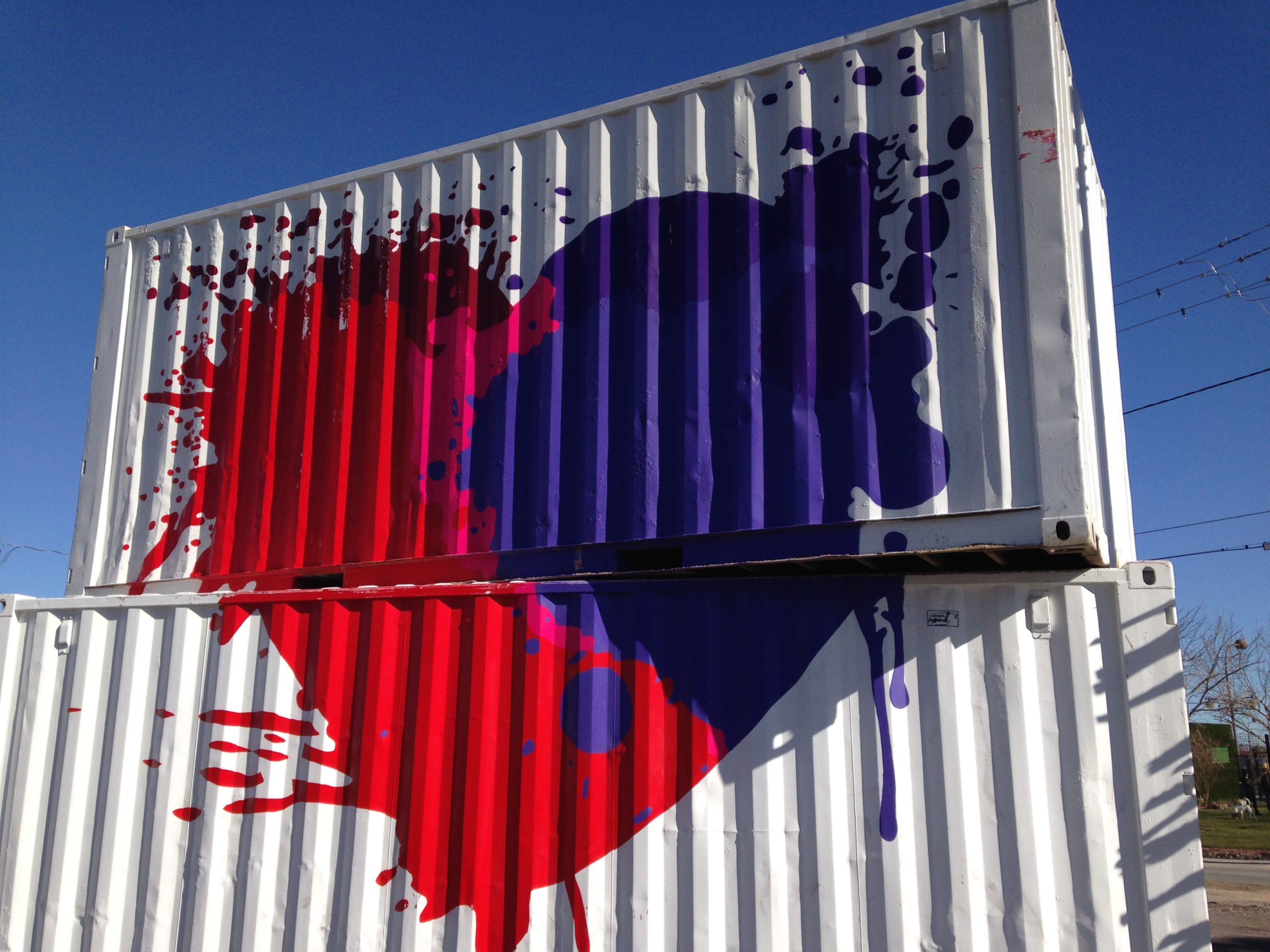
Murals and sculptures from the Life is Beautiful festival are still found throughout downtown
While the Downtown Project is supposedly strengthening the urban core for locals, the broader audience is actually the 1,500 or so people who work at the Zappos headquarters in the former City Hall, some of whom live downtown — but many of whom do not. The projects and events are a type of after-school enrichment program for these employees who have their own ingrained, very specific corporate culture. While the Downtown Project is smaller and completely separate, they share a leader and an ideology, and they have the numbers and attention to help make things happen.
It’s something I want to call “evangelical urbanism” — where a particular type of resident is working hard to build a brand-new, very specific urban culture to lure additional, similar residents. The Downtown Project is working hard both to recruit new followers and to convert local nonbelievers. It’s exciting, energizing, and, I believe, totally earnest in its goals to make the city a better place for all.
The party that never ends
On the fourth day I was staying in downtown Las Vegas, this year’s Burning Man theme was announced. I know this not because I saw it online, but because I overheard people talking about it in several different places. Burning Man just kept coming up in conversation.
At home, a few days later, I finally understood why. The Downtown Project is not just run by lots of people who happen to go to Burning Man. The Downtown Project is Burning Man for downtown Vegas.
Stay with me here.
There are elements of the Downtown Project that feel like direct extensions of Burning Man: The urban follies like the geodesic dome, the drum circle at sunset, the glowing accessories, the emphasis on fire. The praying mantis at the Container Park was, in fact, imported from the festival. There was even a burning woman: a “Lucky Lady Lucy” wooden statue set aflame at a recent First Friday. Even concepts like car-sharing, subscription healthcare, charter schools: They each have that communal, alternative society focus.
I have never been to Burning Man, but I understand what my friends love about the festival, and I definitely see the value in taking cues from it. What the Downtown Project had to create very quickly was a particular culture that would attract more people like them to downtown Vegas. The actual built projects were a few years away at the time, but what they could produce quickly and affordably were things like speaker series, parties, music performances, and murals.
What the Downtown Project has essentially created is an ongoing festival; it’s flashy, fun, and you can feel the electricity (or the open flames) in the air. The spaces are programmed almost to the point of saturation. The stores in the Container Park are packed. There’s always free beer somewhere. (In addition, there are actual festivals within the festival, like Passport 2 Downtown, Life Is Beautiful and the monthly First Fridays.)
It’s nimble and flexible and somewhat fleeting, and, like Hsieh told me in our interview, it’s never the same thing twice. The chances that you’ll stumble upon a free workshop or a live musician or a great restaurant are very, very good. In this sense, it is awesome, and it is certainly great marketing to get young, community-minded tech workers to move to downtown Vegas. It’s also a very good draw for tourists, whether or not that was the intention.
But after talking to local residents and walking the streets for a week, I think there are a few challenges they still have to overcome.
It can feel cultish
You can tell right away who is indoctrinated into the Downtown Project lifestyle, because they don’t call it that; they call it “DTP.” That’s only the beginning of the abbreviations, buzzwords, and in-the-know lingo that I found myself nodding at in conversations, even though I had no idea what people were talking about. The bright-eyed, “evangelical” aspect I mentioned before is prevalent in almost everyone I talk to — and it’s definitely contagious.
But I started to see divisions between those who spoke “tech” and everyone else. “Nerd insularity” is what Jim May, a local visual effects artist, calls it. “While the concept of a ‘startup’ sounds like it pertains to any new business, there is a definite narrowness of focus in the ventures that are getting attention,” May told me.

The Inspire Theatre just opened with a focus on drawing tech speakers and programs that Zappos is known for internally
May has been working in the effects industry since 1997, has his own firm now, and would love to contribute to the new tech energy. “I can’t see a way to do that, at least not in terms of being funded, as I don’t quite see where a visual effects studio would fit in,” he says. He’s now trying to find a way to connect to the movement — bizarrely, he is now having to network with newcomers in his own city. “We’re focusing on trying to find a clientele among those startups, attending speaking events for ideas, and perhaps pulling ourselves ‘in’ by our bootstraps.”
Any strong institution in an urban area is going to have these growing pains — the town vs. gown challenge comes to mind near colleges — but the perceived cliquishness is a problem. If you’re an asset to what they’re doing, you’ll feel like you’re being recruited with the heavy sell. But I definitely got the sense that this movement is not all that welcoming to outsiders.
Local businesses feel left out
It’s not just local creatives who can’t find a “place” in the Downtown Project’s new infrastructure. When I went out searching for Downtown Organic businesses, I talked to other long-time property owners and and entertainment businesses in the area who were thrilled about the changes. But there are a handful of small businesses that haven’t benefitted directly. On the other hand, I actually had trouble finding these: From what many people told me, they were already long gone, like the Fremont Family Market & Deli, that had been in the neighbourhood 15 years and closed last year when the owner leased the building to the Downtown Project.
A block from the Container Park is A Cut Above the Rest, a barbershop that has been at this downtown location for 13 years. Mike Jones, who owns the shop with Curtis Anderson and Tim Wilkinson, told me that he loves the way businesses are growing, especially the new restaurants. But he doesn’t feel included. “You’re either part of the Zappos group or you’re part of nothing,” he told me.

A motel now owned by the Downtown Project is being redeveloped for an unspecified use
“I don’t think they are representative of the neighbourhood; they’re just people who are out here doing their thing with a lot of people coming from out of town,” he says. “They don’t really speak to a lot of people and they don’t really talk to each other. They’re really into their iPads and their iPhones. If you want to make a community, the first thing you have to say is ‘good morning.’”
Less than a block away is Bolt Barbers, a company lured from L.A. to set up a barbershop in a series of railroad cars. It’s not taking away his company’s clientele, says Jones, it’s a different audience. But instead of investing in a local company a block away, importing a similar one from L.A. gives off a bad vibe. In time, these types of moves might drive out the kinds of businesses that can bring the diversity and affordability that would make it a real neighbourhood.
Basic amenities are lacking
Here were my three biggest questions when I arrived: Where was the grocery store, what’s the transit like, and where was the housing? A grocery store is apparently in the works, a small urban market is in the Arts District, and there’s also a farmers market every Friday on 3rd Street nearby. The city is focused on making the streets more walkable, bike lanes are everywhere, and the downtown buses are visible and frequent — but transportation still has a ways to go. Meanwhile, housing, everyone admitted, is the biggest looming problem.
I talked to Dr. Arnold Stalk, an architect and former city housing director who has been lauded for his efforts to bring affordable housing to downtown Vegas, notably a transitional housing project in a former motel for homeless Veterans. “You can’t have a master plan based on bar openings and balloons going up,” he told me. “Any rebirth, revitalization — you can call it anything you want — is not going to work if you don’t address the homeless, workforce housing, affordable housing for households.”
Stalk says he talked to the Downtown Project to pass along his concerns about housing. “I met with them and said: let’s really solve the homeless program. But they’re not interested; they’re interested in the containment and moving of the homeless out of downtown.”
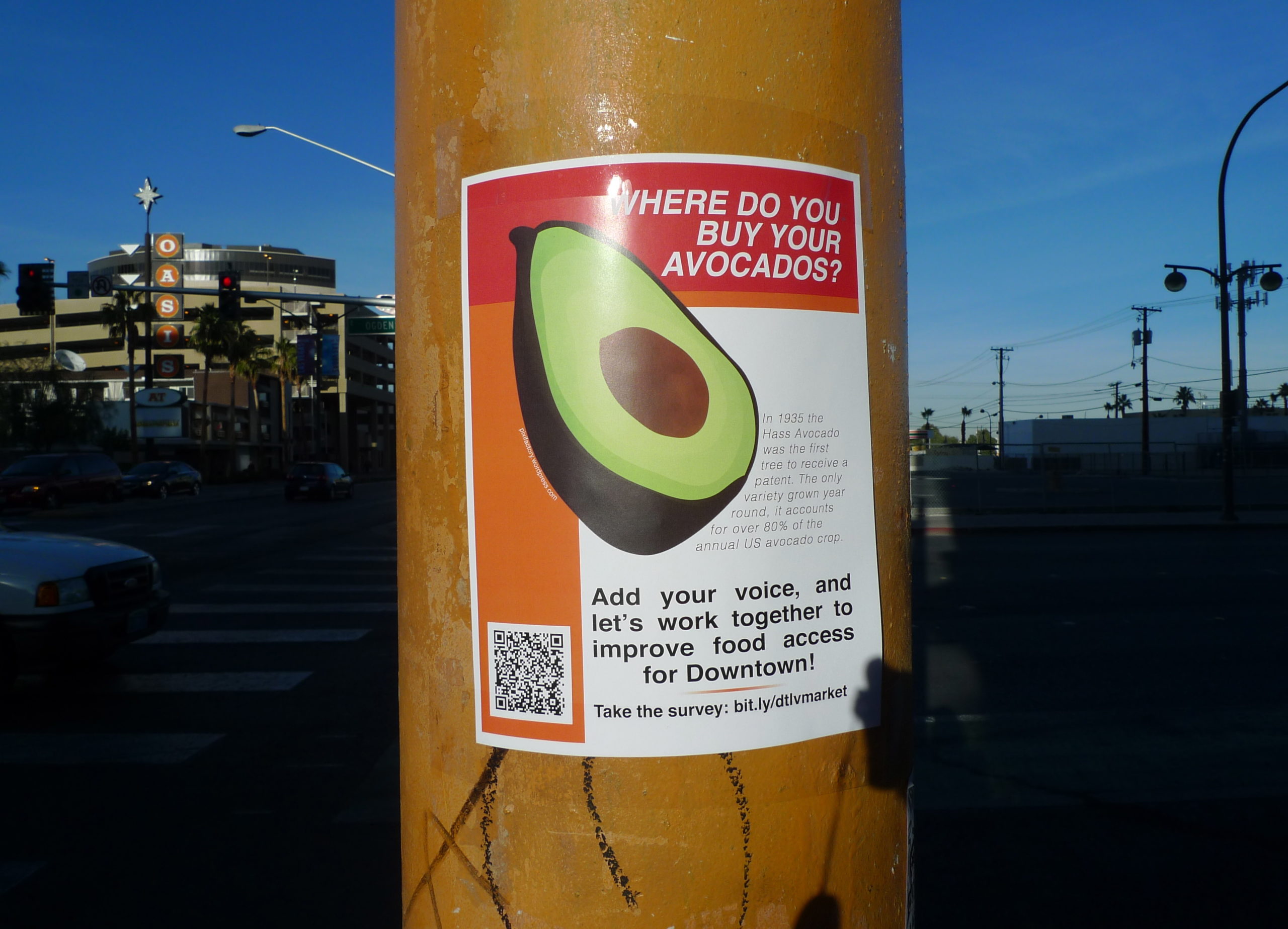
There has been a large movement to increase fresh food access to downtown
Stalk is worried that the buzz for things like the Container Park, which he says is a great project, will actually overshadow some serious social problems that need to be solved first. “That’s not to say we can’t become a Silicon Valley, but we are last in education in the country — it just came out last week again — we have the highest incidence of HIV and AIDS, we have the highest incidence of teen pregnancy, homelessness, drug abuse, of thousand of veterans walking around the street who can’t get their papers processed. We’re in denial of our reality.”
Downtown Vegas has a long way to go before it can be considered a truly livable community. If the Downtown Project doesn’t act now, these challenges will be inherited by them over time.
Hsieh is making tech look good
One thing kept popping into my mind as I was walking around downtown Vegas. What if Google/Facebook/Apple/Your Tech Company Here had decided to do this for San Carlos/San Mateo/San Jose/Your San-Prefaced City Here? We’d be celebrating their every move. We give these Silicon Valley places so much heat for not being better neighbours and Hsieh has gone ahead and transcended any possible expectation we could ever have for a tech company.
Instead of staying in his suburban bubble, Hsieh moved his company downtown. Instead of forking over money to a nonprofit, Hsieh is making a sustained, personal investment in his neighbourhood. Hsieh has done a wonderful thing that we wish corporate leaders would do more of — not build a hermetically sealed spaceship in an apricot orchard, like Apple has disappointingly done.
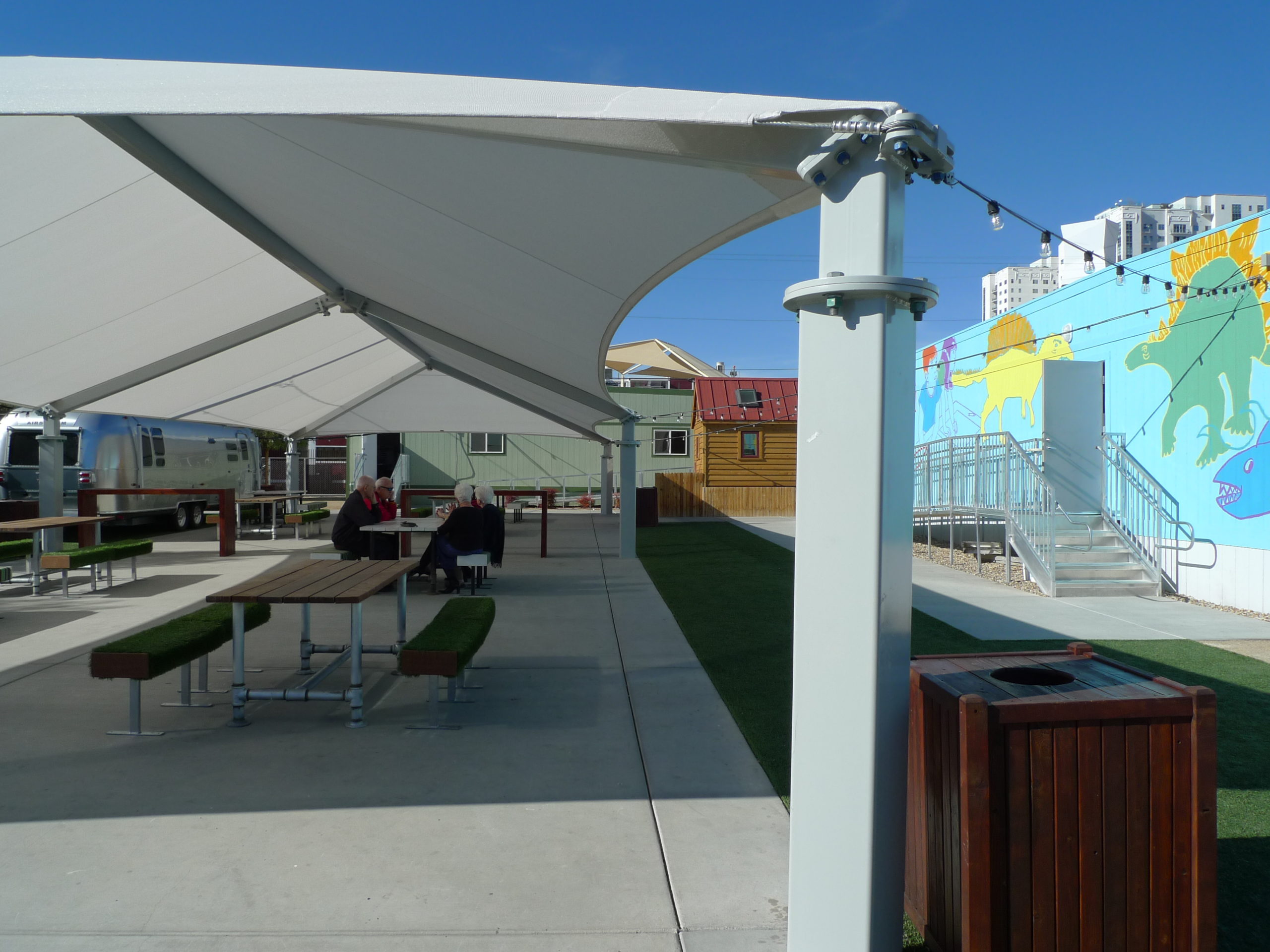
The Learning Village is focused on co-learning, hosting workshops and classes, even for young local students
In my conversation with Vegas’s deputy city manager, Scott Adams mentions how cities like Indianapolis were built by the fortunes of foundations. There have been company towns built around factories like Pullman and Port Sunlight. But now it’s tech money tweaking the model. Instead of building entire separate cities, they’re funding startups, building infrastructure, and pouring resources into an area of a city they inhabit: think of Amazon in downtown Seattle or even Ikea in East London.
With more companies focusing on turning their internal culture inside out, these hybrid “company towns” are formally or informally going to impact cities in a huge way. This is a cool emerging phenomenon, and Hsieh has bravely volunteered to try to figure this thing out first-hand so that other cities will be able to learn from his example.
“Would you move there?”
This is the question I’ve been asked the most. It’s a very good question.
First: I have always loved Las Vegas. I love the bombastic architecture, brilliant colour, and disorienting scale. I love the history. I love the oppressive heat and the searing sun. Vegas already has what hundreds of cities would kill for: People arriving all the time, from all over the world, to spend money and have fun. From a city perspective, no one could ever argue that Vegas is boring.
But maybe because I’ve lived in Los Angeles for so long, I can empathise with the city’s identity crisis: L.A., too, has spent decades trying to become even more over-the-top for tourists, but now we have to remake our city in a way that acknowledges that people actually live there, too. The most surprising thing about the Downtown Project is that, although it’s for locals, it turns out that tourists are just as interested in seeing a cute park made from shipping containers with the world’s greatest slide.
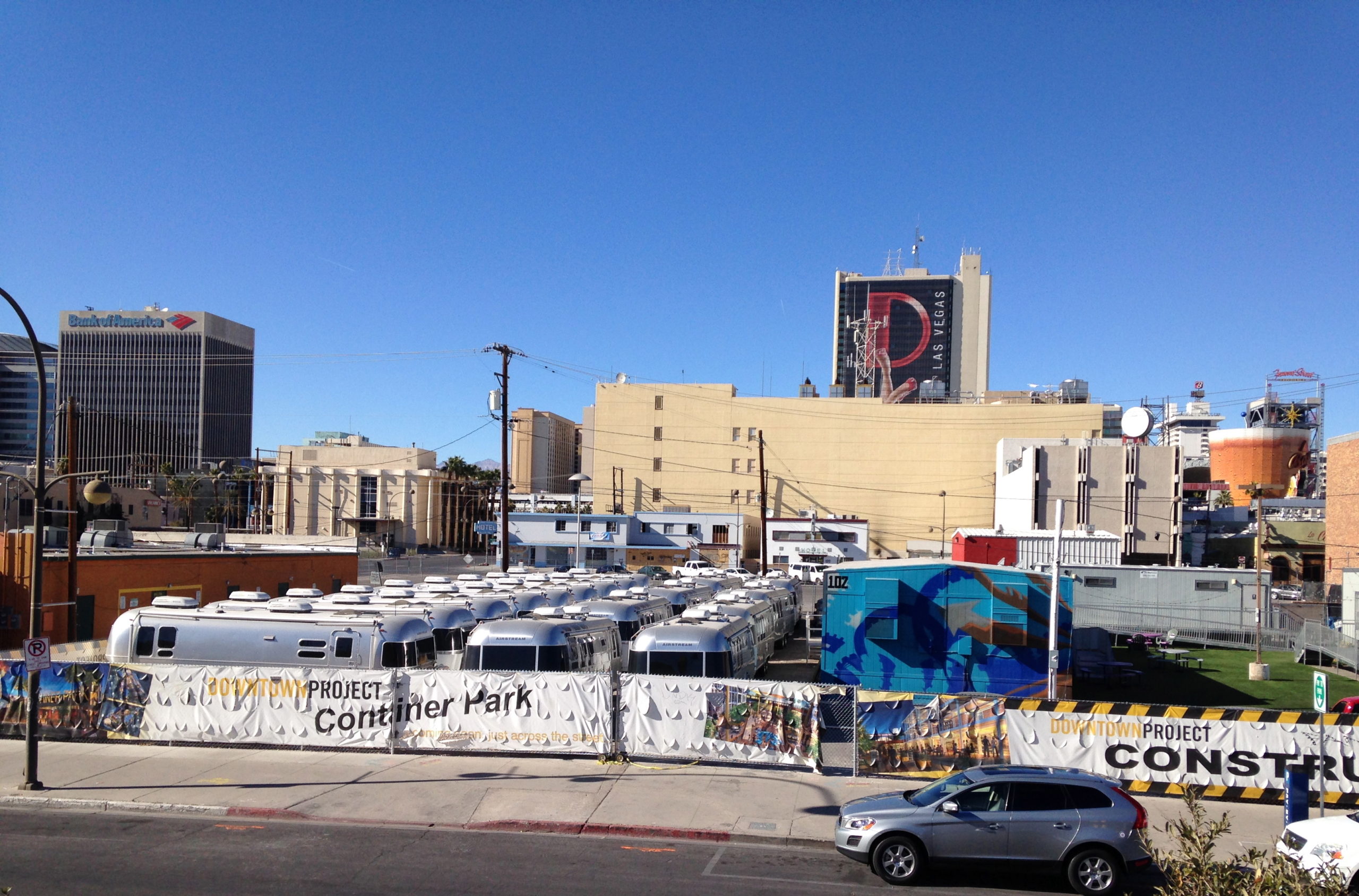
Airstreams in a construction area being readied as “rooms” in a boutique motel
It goes back to the idea of being pioneers. Of course the Downtown Project is not working with a completely blank slate, but these are blocks where nothing has ever been built. Are there any other internationally renowned cities that you can say that about? Where you could come and build something where literately nothing has been?
I think that’s the appeal, and it also goes back to my evangelical urbanism theory: You can roll your covered wagon startup into town and make a place for yourself, like a high-tech homesteader.
But the fact that the Downtown Project has “subscribers” — people who visit to try it out before moving there — is very telling. It’s not an easy sell to start from scratch. It’s still a risky move, and I’m not sure I’d be up for it. But someone with a startup might be well-accustomed to that feeling and go all in.
The happiest place on earth
Disneyland is a place that came up a lot in my conversations with locals when they tried to describe what the Downtown Project was doing. Walt Disney didn’t like the atmosphere of carnivals and amusement piers, so he built his own with everything he wanted. Like Disneyland, the new Vegas downtown is an extension of Hsieh’s personality, filled with the things he likes. I like a lot of the same thing Hsieh likes, so I enjoyed being there. But there are some people, including longtime downtown residents, who won’t like it.
There’s a town in Florida named Ave Maria that was started by Domino’s Pizza founder Tom Monaghan, designed to attract and nurture Catholic families. It’s more of a New Urbanist development than an urban revitalization project, and he is, of course, no longer the head of Domino’s. But it is an example of where one man’s money and ideology have created an entire opt-in society.
As I alluded to earlier, investment money from the current tech boom will start finding its way into other urban areas, and this will create new and complicated relationships between corporate values and city-building. Corporations sponsor stadiums, what’s to say they won’t start sponsoring neighborhoods? Where do we draw the line?
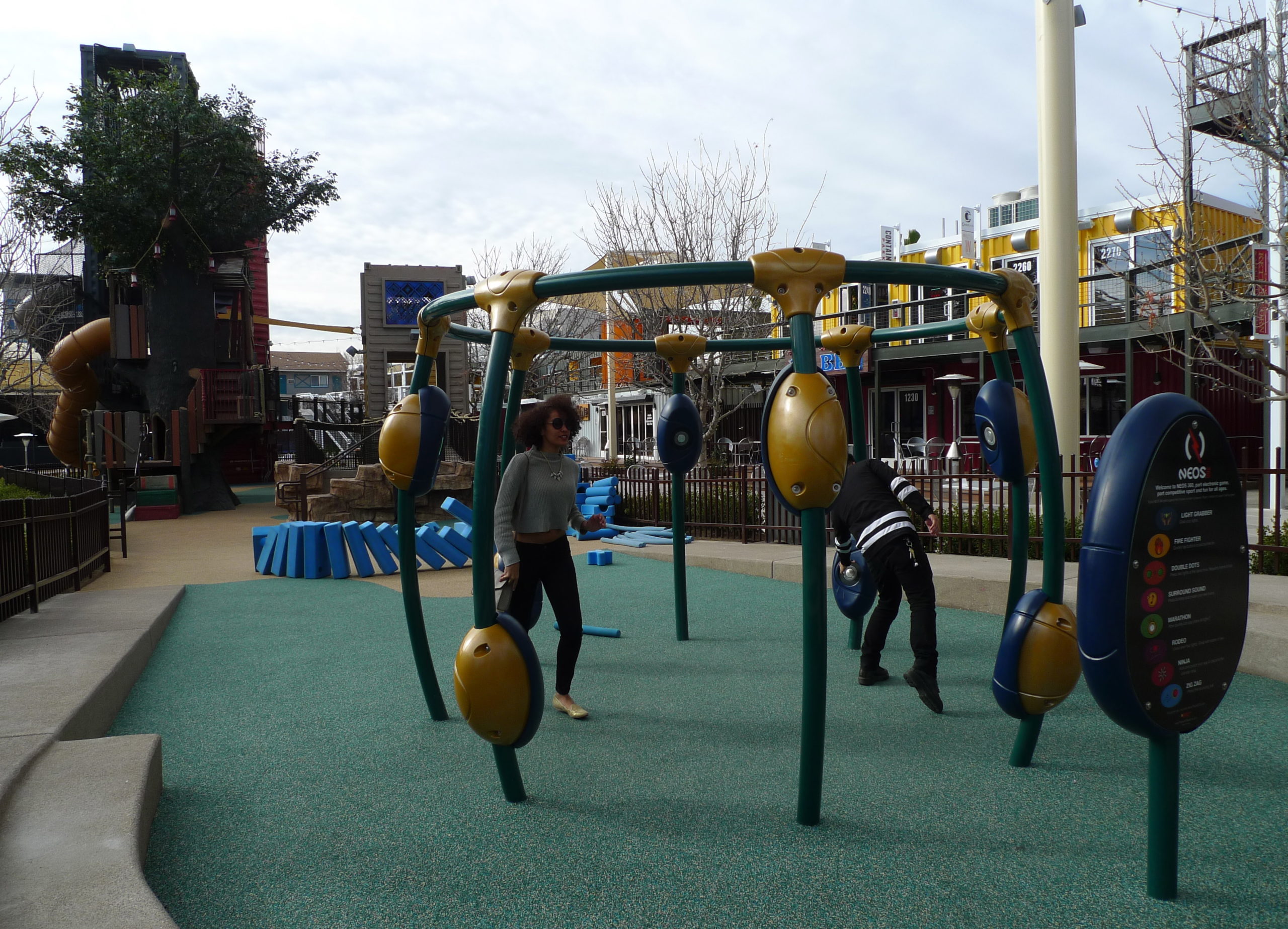
An electronic game at the Container Park playground that’s like a giant Simon is fun for kids and adults
In my conversation with Stalk, however, he gave me some pretty important perspective. Compared to other interests in Vegas, the Downtown Project/Zappos is really just a blip on the landscape. The culinary union, for example, is over 75,000 people. There are international gaming companies headquartered there that are building more than 10 times what the Downtown Project is planning. “We already know how to build cities literally overnight,” says Stalk. “But there will never be a city as dynamic and not afraid to try anything as us.”
That same spirit is also driving the optimism and the energy that is making the Downtown Project so white-hot. Now they have to embark upon some tougher challenges to include the excluded, embrace the diversity of the area, and build projects that truly serve all downtown residents. Otherwise it’s just a festival that fizzles in a few years.
There is one final thing I need to mention. Last Tuesday night, one of the Downtown Project employees was discovered dead, and it was later declared a suicide. Meetings and events were cancelled and, in my interactions with people, I could very tangibly feel that something was wrong. A chalkboard out on Fremont Street had the young man’s name on it, and I quickly figured out what had happened. Almost everyone I talked to knew him and was devastated.
I mention this not for any other reason except for the fact that a crisis is often a way to test a community’s strength and, from what I saw, this was a very real community: connected, compassionate, and in mourning, together.
